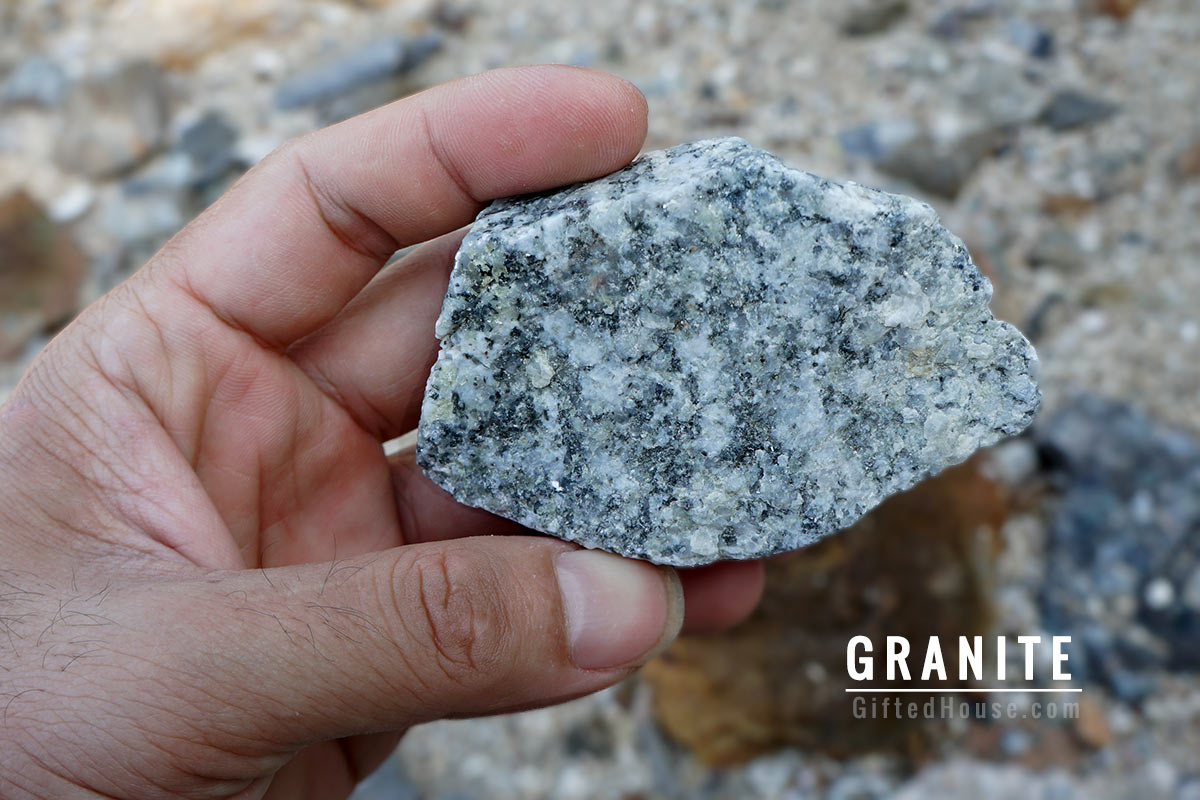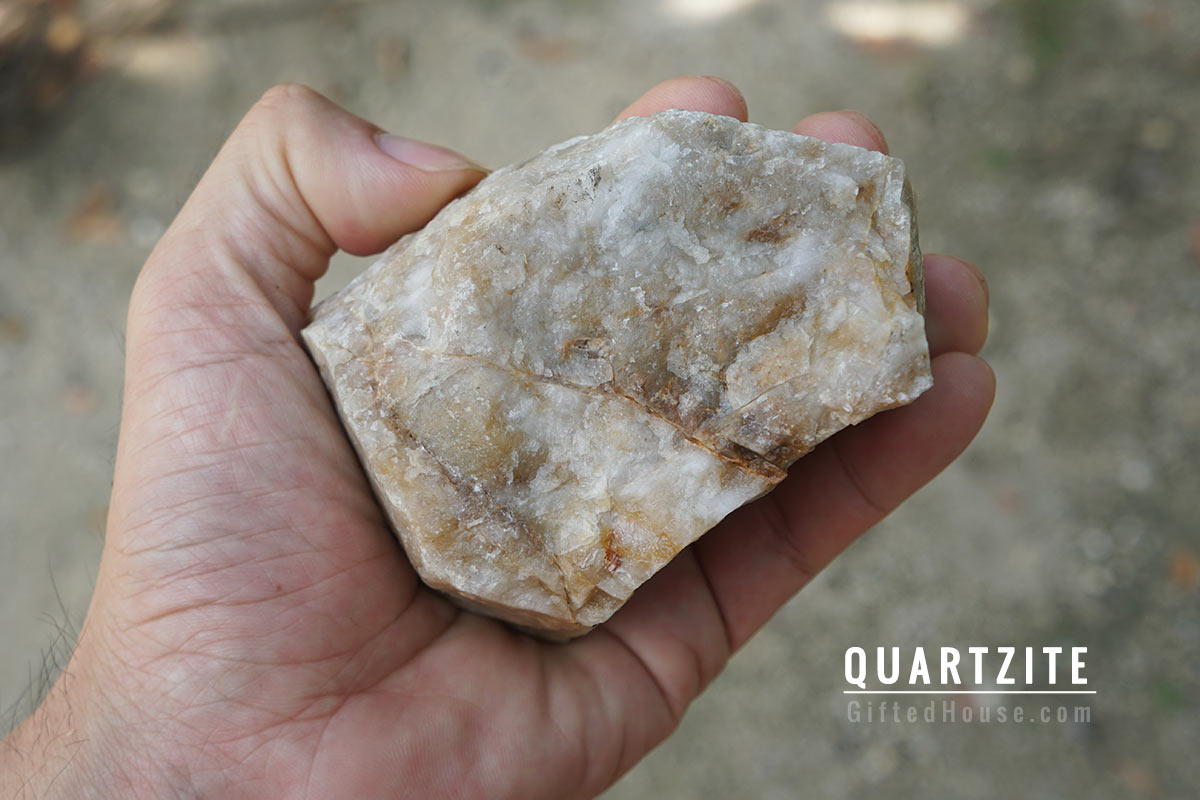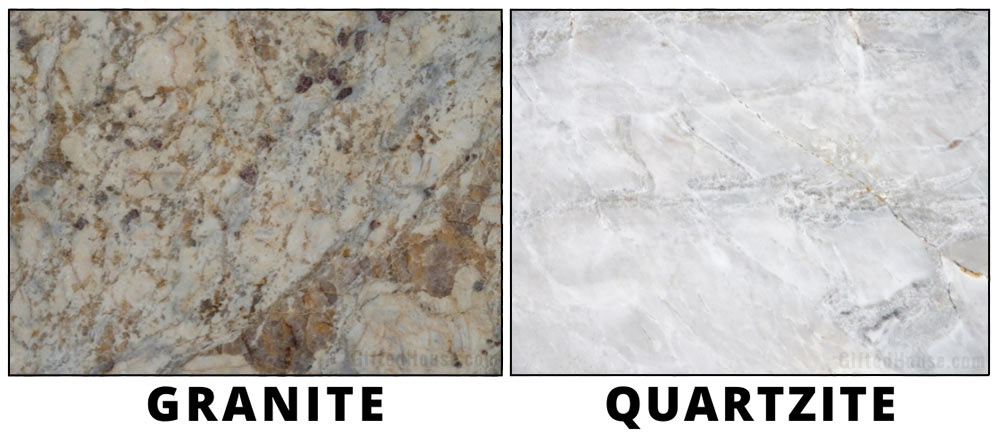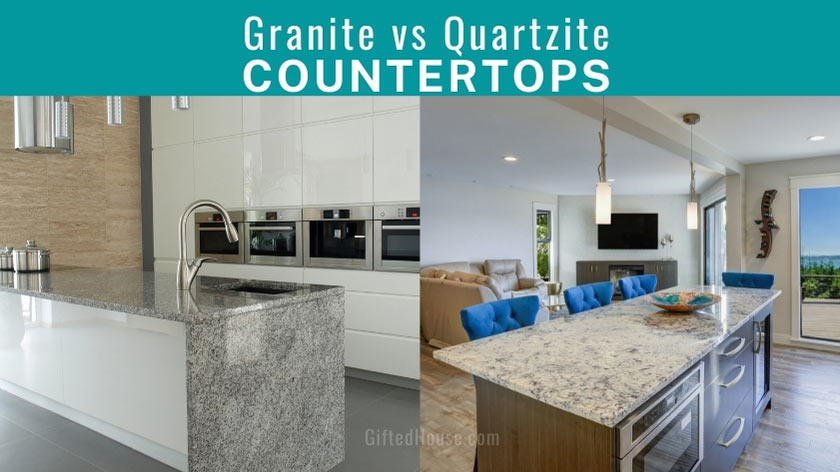Redesigning a kitchen can be one of the most exciting projects carried out on a home and also one of the most expensive. Whilst it is tempting to rush out and select the first designer kitchen available, it is important to take the time to properly consider every aspect of the design, as it will be present for many years to come.
One such design element to agonize over is the choice of kitchen countertop material. Two of the most popular options are granite and quartzite countertops. Below, we go over the differences of each, along with their pros and cons.
Difference Between Granite and Quartzite
The main difference between quartzite and granite is the formation of the stone. Granite is an igneous rock while quartzite is a metamorphic one. When it comes to countertops, they differ in texture, heat and scratch resistance, and in price.
Granite Stone
Granite is an igneous rock that is a mix of several coarse grains of mostly quartz, feldspar, and plagioclase that has pushed up into the Earth’s landmasses as magma and then slowly cooled. Blocks of granite are mined by drilling, cutting, and blasting, and then refined through heavy machinery to make the slabs that are used in construction and for decorative work like kitchen countertops.
What is Quartzite?
Quartzite, on the other hand, is a metamorphic rock. It formed when sandstone was compacted and heated by tectonic action to create a new material. It consists almost entirely of silicon dioxide in the form of quartz and is extracted from open-pit mines where blasting is generally avoided as this damages the makeup of the quartzite.
Granite vs Quartzite Comparison
Everyone has different tastes, so with that in mind let’s look at the differences between these two materials to help figure out which will be the right option for you.
Appearance
Whilst both Granite and Quartzite are naturally occurring rock formations, they differ in terms of their appearance. The mineral grains in granite can be quite noticeable and whilst it does not have any natural structure, it can have streaks, intrusions, and variations of color that give it a wonderful character.
In contrast, Quartzite tends towards a more subtle range of hues and structures. Rather than bold streaks of red or dark grey inclusions, as sometimes found in granite, it often features soft feathering effects and soft white and gray colorations and has an appearance similar to marble or travertine. Quartzite is made up of over 99 percent fine grains of quartz which lends it a lustrous sheen.
Scratch Resistance
Granite and Quartzite are both incredibly hard materials that resist scratches with ease. Strictly speaking, Quartzite is the stronger material, scoring 7 out of 10 on the Mohs scale, a scale of hardness that has Diamond at a 10, and Talc as a 1. Granite is marginally softer at 6.5. Due to this hardness, you will likely damage sharp steel knives if cut directly on the granite surface, and we recommend using a chopping board to avoid this.
It is hard to scratch either countertop type and if you are testing a slab before purchase and it does easily scratch, then it is most likely a softer material, such as Marble.
Heat Resistance
Both materials are formed through intense heat and as such are both easily able to withstand the heat of direct contact with pans fresh from the hob. However, as a word of caution, some companies add resin to quartzite which gives it a shine and can also protect more brittle slabs, but the resin can make a countertop more likely to show etching, which we cover in more detail below.
When opting for quartzite kitchen countertops, be sure to ask whether the slab has been infused with resin.
Strength & Durability
As we have discussed above, granite and quartzite are both very hard materials that are generally heat resistant. However, both materials can suffer from etching, from heat or chemical sources. For granite, it is important to ensure that the stone has been sealed to avoid ingress from dirt and germs. Harsh chemicals, especially acids, can cause damage to the surface layer, dulling the surface appearance in a manner that can appear like a stain.
Quartzite is slightly stronger and is even more heat resistant, as long as the resin has not been used, but it can sometimes contain small amounts of calcite that will react with acids, such as lemon juice. When this reaction occurs, some of the calcite will effervesce, leaving small depressions on the surface that will worsen with time. Granite is not impervious to acids either, so quickly wipe up spills of common acids, such as lemon juice, tomatoes, or red wine. If you notice etching occurring for either surface type, this is a sign to consider using a sealant.
For both countertop options, it is possible to chip the material. This is due to the hardness of the rocks which makes them inflexible, so sudden shocks can result in cracks or chips. This can be caused by dropping heavy items or striking them hard with objects such as heavy-duty knives.
Maintenance
For the most part, both granite and quartzite are very easy to maintain. Spills should always be wiped up as soon as possible to avoid etching and staining. The countertops should be cleaned with soap and water and there is no need to use any harsh chemicals, in fact, this should be avoided. Avoid using anything that is highly acidic or alkali on the surfaces, such as ammonia, bleach, or even Windex.
Price
Quartzite, on the whole, is rarer than granite and as such commands a higher average price. That said, because the granite is much more variable in appearance, some slabs will command significantly higher prices due to their exclusivity. If planning to go the granite route, it is important to be aware of this higher volatility.
Pros and Cons of Granite
So we’ve established that both stones are great-looking and hard-wearing options for your kitchen countertops, but how to decide which one is right? Let’s look at the pros and cons of each.
Pros of Granite
- There is a greater supply of granite, resulting in generally lower pricing.
- There are many different variations of granite, with granite from different regions having different characteristics. Even slabs from the same quarry will be different from each other, so no two countertops will ever be the same.
- Granite may have no set internal structure, but it can have intermitter patterns, such as leathering, veining, and other shapes. Individual grains within the granite can look fluid or coarse.
- It is heat resistant.
- It is scratch-resistant
- Granite is chemical resistant as long as it has been sealed.
Cons of Granite
- Granite can be of various porosity, to some granites will require sealing to prevent staining and etching.
- Etching can lead to poor hygiene as particles of food can become trapped.
- A sharp heavy blow can chip granite.
Pros and Cons of Quartzite
Following are the main advantages and disadvantages of quartzite countertops.
Pros of Quartzite
- Quarzite has a softer look, similar to marble.
- It is stronger and more durable than granite.
- It is scratch-resistant
- Because quartzite is often less porous than granite, many slabs do not need to be sealed.
- Quartzite’s smooth and pale appearance is currently in vogue and gives a popular, elegant look.
Cons of Quartzite
- First and foremost, some people confuse quartzite with quartz countertops. Quartz countertops are man-made slabs, not naturally obtained, and are distinctly inferior, not least due to their lack of heat resistance. Take care not to be sold a quartz countertop by mistake.
- There is little color variation in Quartzite when compared to granite.
- It is the more expensive option due to being scarcer, and harder to obtain.
What Is Better Granite or Quartzite?
Both stone types make great countertops, so the question must be, which one is right for you? They are both beautiful and hardy materials that, with proper care, will last a lifetime, so the debate over granite vs quartzite has to come down to personal tastes.
Granite has a much higher variety of looks which is both a blessing and a curse. If you have your heart set on granite, you now need to find the exact slabs that will suit your designs, which is sometimes easier said than none. If you do find the perfect slab, it can set off your kitchen wonderfully and is a real statement piece.
Quartzite on the other hand is a much more known quantity, and whilst the exact pattern will be different from slab to slab due to natural variation, it will take no time at all to find a slab to suit you if quartzite was your chosen material. We should add that it is not impossible to get quartzite with color, as it can be red, green, or blue when small amounts of other minerals are trapped between quartz grains, but these will be soft, subtle colorations, not the bold strikes found in granite.
Find a stonemason to work with your kitchen designer to ensure that you can source the right slab for you. Don’t shy away from asking for photographs of potential slabs if they are to be shipped to you and make sure you discretely test the slab in an out of the way corner (on the underside, preferably) to make sure you get the expected scratch resistance that you are paying for.
Which stone would you go for?




